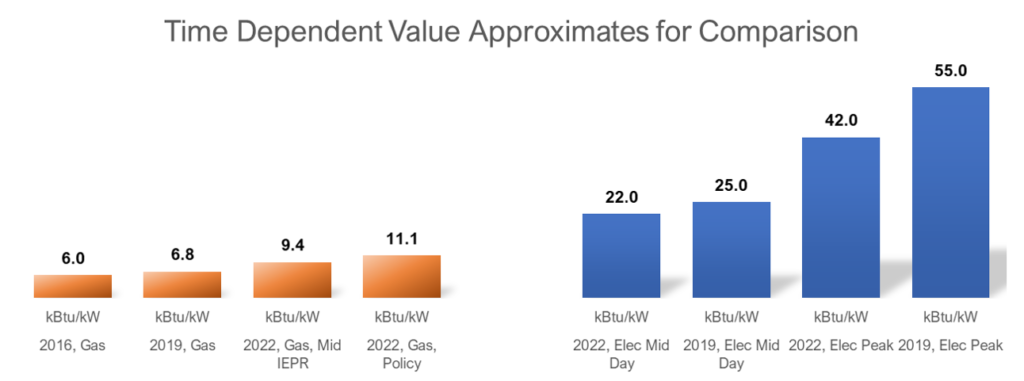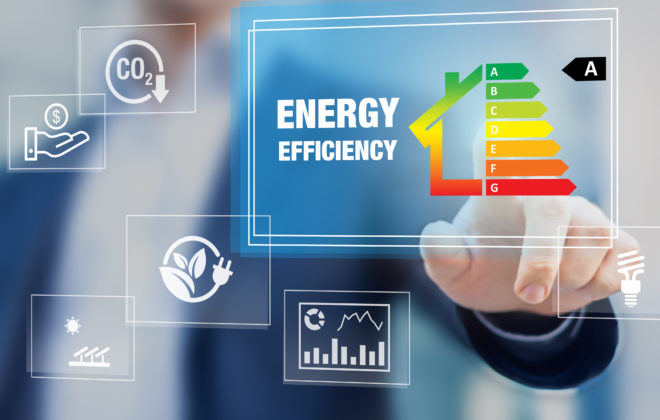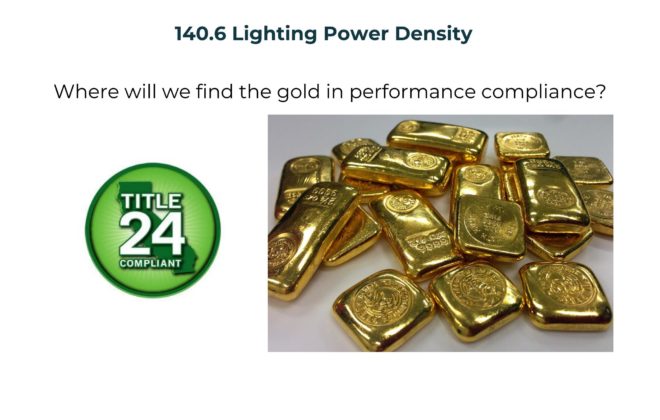
Title 24 2022: Carbon Based Energy Codes for California?

In a workshop this October, the CEC released a set of working presentations about efforts underway to re-shape energy codes and standards for California building codes. With a rapidly changing planet and massive deployment of renewable energy which are changing the very shape of the energy grid, building codes and standards need to step up and give building construction clear signals of what type of infrastructure we need.
The workshop focused on major plans for changing how buildings are evaluated for energy efficiency and meeting a minimum level of acceptance when projects file for construction permits. Worth highlighting, the same set of metrics is used to evaluate code changes and decide which energy codes get adopted as well as evaluating construction projects on a case by case basis. This first part of code advancement is often overlooked and equally important in making policy choices.
From the October 17th Workshop
From the workshop, new metrics for determining a buildings Source Energy were shared, where the time of energy use and fuel type determine what energy had been consumed and converted to useful energy in a building. This metric would basically better reflect a carbon equivalent time of use emissions factor and shift the focus towards buildings which would minimize their source energy footprint. While the emissions from electricity to gas would become a lot closer, with electric emissions basically dropping to 0 in the middle of the summer days, some interesting twists were added to the source factor for gas. One slide presented showed how gas will one day be a blend of natural gas with biogas and hydrogen gas (20% and 8% by 2050) to reduce the Btu/th blended emissions value by 13% from straight natural gas.
The discussion is not a full-fledged departure from how energy codes and buildings are evaluated today. For those who are familiar, the infamous Time Dependent Value of energy cost is back and revised to be better than ever for 2022. This metric represents the true value of energy to society and varies by time throughout the year and location in California. Previously, the cost equivalent value for consuming electricity was nearly 4x to 5x the cost of using the same amount of natural gas energy, making technologies like heat pumps and all-electric buildings challenging to meet code equivalency. Taking into account several forecasts of the future changing price of energy and time of use on the grid this new TDV for 2022 will result in a large shift by itself in the types of buildings and technologies used. With the adjustments in TDV for gas going up and TDV of electric becoming more duck-like the cost equivalent value for electricity is now going to be on average closer to 2x to 3.5x that of natural gas, dropping to 1.8 at some hours, bring a whole new wave of cost effectiveness opportunities for heat pumps and all electric buildings. There were in-fact two natural gas forecasts considered, with one being more inclusive of recent policy advancements from the CPUC called the ‘Policy Compliant’ option. The other, referred to as the ‘Mid IEPR’ is based on a retail only forecast and fairly short sighted in my opinion as to the changing landscape of gas costs to society as a whole.
For comparison I took some of the numbers shared and normalized them to share the magnitude of change. These are vastly simplified numbers so keep that in mind.
While all of this was very interesting there were still large gaps in the discussion worth knowing and responding to before the 30th of this month. In my mind the biggest gaps were:
- No Clear Direction or Decision for Commercial Buildings. Source or TDV? Or Both? No mention was made.
- Codes use a fuel independent baseline system and assume all buildings are heated with gas.
- Future Forecasts of Renewable Gas and All Electric Buildings were at odds with reality.
No Clear Direction or Decision for Commercial in 2022
While these metrics are fun to understand and discuss, the biggest item for me was there was no set framework for how these metrics would work in commercial (non-residential) buildings and rather, the workshop left it as an open question to the public. How should metrics be utilized? And is the commercial world of 2022 (or 2023 rather when this is enforced) ready for source energy? And how would it work? The lack of statement could make you assume the plan was the same for residential and commercial but they never actually said this.
I have outlined a few draft plans for commercial in this absence of one for people to think about:
Plan #1 Source Energy Only
TDV For Code Adoption Only, Source Energy for Compliance Evaluation
Use of TDV as defined would still be part of evaluation of code cost effectiveness evaluations when enhanced each code cycle however permits and building compliance would only be allowed to use source energy. I am not entirely certain if this split in functionality between code enhancements and code compliance is allowed by law though it is just an idea to consider.
This plan would require a baseline be set to be fuel dependent, with all electric buildings being compared with all electric and so forth with gas. Without this, source metrics only would give all electric buildings large advantages against a gas fuel baseline and could result in worse performance in a buildings envelope or lighting systems.
- Pros:
- Compliance would be relatively easy to explain to the general design community
- Dependent fuel baseline would be more intuitive to designers
- Cons:
- This split use of metrics may not be technically allowed today at the CEC between code advancements and project evaluations
- Envelope performance may still be at risk of inefficiencies compared to prior codes
- Code enhancement teams would have to juggle more metrics and hoops to evaluate code cycle advancements
Plan #2 Dual Metrics with On-Site Features
TDV for building efficiency systems and Source for building + grid services. The same format being considered for residential codes could be applied to commercial projects. Source energy metrics could be evaluated after a building complies with TDV first and the equation could be expanded to include local battery, solar by building size, and DR controls, applied as a power adjustment credit to the end use it is configured with (HVAC or lighting).
Efficiency is able to be maintained even with fuel independent baseline since TDV is still used to evaluate efficiency first. Gas buildings could be required to include some form of on-site battery and solar systems to reach a level of source emissions, which could actually be similar first costs as all electric buildings due to the low cost of gas furnaces and boilers compared to heat pumps. DR credits would need to be defined with more certainty to place time of use credits on building use profiles. This would create an ability for codes to set criteria for building side energy management systems.
- Pros:
- Dual metrics would align with residential codes for common advancements and decisions at the energy commission.
- TDV and source would allow an independent baseline to be maintained and reduce the amount of additional work on defining all electric baselines and software.
- Cons:
- The second Pro bullet could also be considered a con.
- Code compliance would become more complex to calculate, estimate, and explain to the public.
- Code enhancements would equally become more complex and intricate.
Plan #3 Source Energy Criteria with an Enhanced TEDI Metric
Like Plan #1, TDV would be maintained only for evaluation of code enhancements for each code change cycle. Source Energy metric would be used for compliance evaluation inclusive of a mandatory criteria to reach a Thermal Energy Demand Intensity (TEDI) metric for heating and cooling. Codes would directly set criteria for envelope holistic performance, by building type and climate, and mandate some buildings must verify this outcome in the field.
This approach could still maintain an independent fuel baseline however the envelope performance criteria would prevent an all-electric building from derating or installing low efficiency envelope and lighting systems. If batteries and some form of on-site solar or DR criteria were to be added to codes, an all-electric building may very well be capable of not requiring these things, similar to Plan 2, when the baseline gas building would.
- Pros:
- Simple to explain a source energy metric requirement to the design community and national community
- Addition of a envelope performance criteria and framework for further validation of construction could make real advancements in persistent performance
- An independent fuel baseline could be maintained until deemed appropriate
- Additions of on-site grid services could be included in an energy code without additional rule steps
- Cons:
- This split use of metrics may not be technically allowed today at the CEC between code advancements and project evaluations
- Would require a research effort to define TEDI limits be completed in California which should likely consider a peak cooling as well as heating element
Additional Topics
I had listed some additional topics and concerns which came out of the metrics workshop worth knowing about.
- The discussion of fuel independent baselines was simply not discussed and has a bigger impact than one might think.
- The topic of gas forecasts including a mix of bio gas and hydrogen was included in the future carbon source equivalent of gas. This seems strange given the lack of significant effort being made to actually do this or good examples of this actually happening.
- The issue with all electric buildings has to do with the forecasted growth rates of all electric buildings taking until 2030 to really see any trend or significant inclusion. Even if this assumption may result in advantageous outcomes for some it is simply not true and a more accurate prediction of the future should be made.
- Other odd ideas included a thought to include stationary refrigeration leakage as a modification factor in TDV, particularly as it relates to all electric buildings which might use more heat pump technology and more refrigerants. This idea, while interesting and gives a nice shout out to the CARB is pretty significant from a carbon scope perspective. It basically means building codes would be evaluating not just Scope 2 but now Scope 1.
- As was mentioned previously there were also two forecasts for natural gas price done and presented. Overall the are differences and this is an easy one to weigh in on. Choose the Policy Compliant option.
But What Do You Think?
The real importance is for people to submit their comments and voice to the energy commission on this topic by no later than November 30th. A link to the presentations shared is below, along with a link for how to post your comments to the Energy Commission.
Written comments: Written comments must be submitted to the Docket Unit by 5:00 p.m. on November 30, 2019. Written comments will also be accepted at the workshop; however, the CEC may not have time to review them before the conclusion of the meeting.
Written and oral comments, attachments, and associated contact information (e.g. address, phone number, email address) become part of the viewable public record. This information may also become available via any internet search engine. The CEC encourages use of its electronic commenting system.
Visit https://efiling.energy.ca.gov/Ecomment/Ecomment.aspx?docketnumber=19-BSTD-03 which links to the comment page for this docket. Select or enter a proceeding to be taken to the “Add Comment” page. Enter your contact information and a comment title describing the subject of your comment(s). Comments may be included in the “Comment Text” box or attached in a downloadable, searchable Microsoft® Word (.doc, .docx) or Adobe® Acrobat® (.pdf) file. Maximum file size is 10 MB.
Written comments may also be submitted by email. Include the docket number 19-BSTD-03 and Triennial Energy Code Measure Proposal Template in the subject line and send to docket@energy.ca.gov.
All presentations are online at: https://efiling.energy.ca.gov/Lists/DocketLog.aspx?docketnumber=19-BSTD-03





